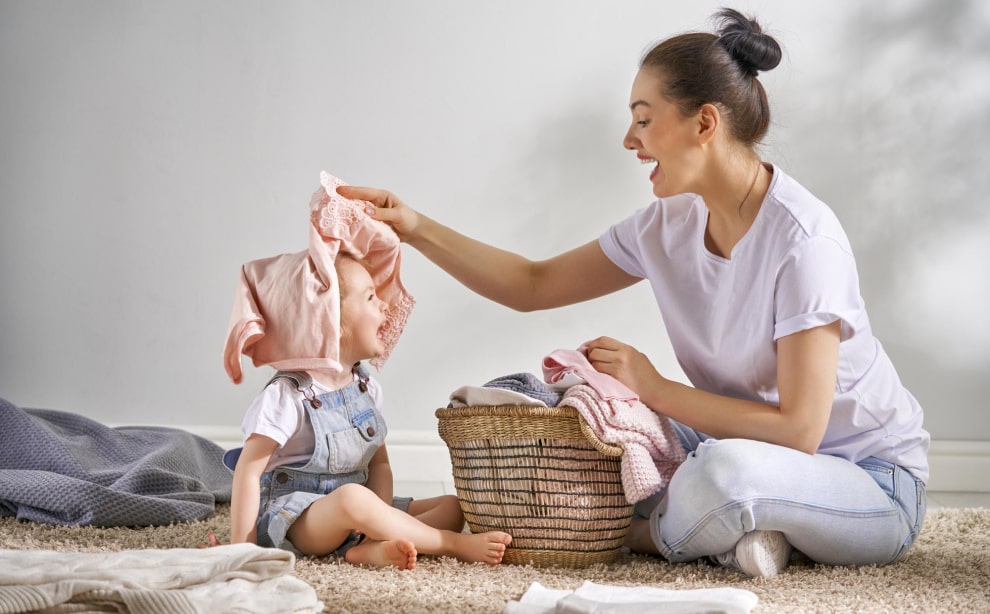If you have kids, you know how expensive it can be to buy them new clothes, toys, books, and other items. Kids grow fast, and their tastes and preferences change often. Buying everything new can put a strain on your budget and create a lot of waste.
That’s why many parents opt for hand-me-downs and second-hand finds for their kids. Hand-me-downs are items that are passed down from older siblings, relatives, or friends. Second-hand finds are items that are bought or acquired from thrift stores, garage sales, online platforms, or other sources.
Keep on reading to learn more…
How to Make the Most Out of Hand-Me-Downs?

In the era of fast fashion and quickly outgrown children’s clothes, buying everything new can get very expensive. Luckily, there are plenty of ways for savvy parents to cut costs by making use of hand-me-downs and second-hand items. Read on for tips on how to source, care for, and refresh these gems for your little ones.
Here are some of the tips that you can use to make the most of the hand-me-downs:
Sort and Store
One of the first things you must do is sort and store your hand-me-downs and second-hand finds properly. This will help you keep track of what you have, what you need, and what you can pass on to others.
- Sort your items by size, season, and category. For example, you can have separate bins or boxes for winter clothes, summer clothes, shoes, accessories, toys, books, etc. Label them clearly and keep them in a dry and clean place.
- Store your items in a way that preserves their quality and prevents damage. For example, you can use vacuum-sealed bags, plastic containers, or cedar chests to protect your items from dust, moisture, insects, and mold. You can also use hangers, dividers, or organizers to keep your items neat and tidy.
- Check your items regularly and get rid of anything that is stained, torn, worn out, or outdated. You can donate, sell, or recycle your unwanted items or use them for crafts or other purposes.
Mix and Match
Another thing you need to do is to mix and match your hand-me-downs and second-hand finds with your kids’ existing wardrobe and preferences. This will help you create some fun and stylish outfits for your kids and make them feel comfortable and confident in their clothes. You should try to mix and match:
- Colors, patterns, and textures. For instance, you can pair a solid-colored shirt with a floral dress or a plaid skirt with a denim jacket. You can also mix and match different fabrics, such as cotton, wool, silk, or leather. This will add some variety and interest to your kids’ outfits.
- Styles and trends. For example, you can combine a vintage sweater with a modern pair of jeans, or a classic dress with a trendy pair of sneakers. You can also mix and match different genres, such as casual, formal, sporty, or bohemian. This will give your kids some personality and flair in their outfits.
- Accessories and details. For example, you can add a belt, a scarf, a hat, or a necklace to your kids’ outfits. You can also add some buttons, patches, stickers, or pins to your kids’ clothes. This will give your kids some fun and creative touches in their outfits.
Customize and Personalize
The last thing you must do is customize and personalize your hand-me-downs and second-hand finds for your kids. This will help you make your items fit better, look better, and feel better for your kids. It will also help you express your kids’ individuality and uniqueness.
- Customize your items to fit your kids’ size and shape. For example, you can hem, alter, or resize your items to make them fit your kids better. You can also add some elastic, buttons, or snaps to your items to make them more adjustable and comfortable.
- Customize your items to suit your kids’ style and taste. For example, you can dye, bleach, or paint your items to change their color or pattern. You can also cut, rip, or distress your items to give them some edge or character.
- Personalize your items to reflect your kids’ interests and hobbies. For example, you can embroider, applique, or print your items with your kids’ names, initials, or monograms. You can also decorate your items with your kids’ favorite characters, animals, or symbols.
Sourcing Quality Second-hand Pieces
You can uncover great used pieces from friends and family, charity shops, and online marketplaces. When accepting offers of hand-me-downs, don’t feel you need to take everything you’re given. Politely decline items that are overly worn or stained, and only keep pieces that are still in good condition.
For second-hand shopping, hit up charity shops in more affluent neighbourhoods where higher quality kit is often donated. Check items thoroughly for flaws and be selective in your purchases. Online, sites like eBay, Depop and Vinted offer everything from babygrows to bikes being sold on by other parents, helping you make the most of your budget or fostering allowance.
Caring for Hand-Me-Downs
To maximise the longevity of hand-me-downs and second-hand items, properly launder and care for them before passing them on to your little one. Check clothing labels and wash items according to fabric type. Mend any small holes, broken zippers or loose buttons.
For items like bikes or baby gear, inspect them thoroughly and replace any worn parts. Give everything a thorough cleaning to remove grime and make sure pieces are fresh for their new owner.
Refreshing & Repurposing Finds
Sometimes second-hand stuff just looks, well, second-hand. Luckily there are inexpensive ways to give things new life. For clothes, accessories and soft toys, a spot clean followed by a wash in Oxiclean or similar can freshen up fabrics.
Embellish with ribbons, embroidered patches or appliqués to add decorative flair. Turn that dull vest into a one-of-a-kind piece your child will love. Repurpose old pieces too – vintage babygrows make adorable doll clothes, and adult t-shirts can be made into dresses.
Making Second-hand Finds Feel Special

Hand-me-downs and pre-loved items often come with a history. Share what you know about an item’s origins with your little one – they’ll love having their own “special story” attached to their clothes and toys.
Help them personalize pieces by adding custom touches like initials or fun fabric paint designs. And display their second-hand treasures proudly by letting them select special books or toys for their rooms. Soon these pre-used gems will hold pride of place in your child’s heart.
Additional Tips
- Check items’ safety before passing to little ones – no small broken parts, frayed edges etc.
- Store off-season clothing rotated with your child’s growth
- Mix second-hand pieces with new ones in your child’s wardrobe
- Pass pieces along to younger friends/family members when outgrown
Sourcing and caring for pre-loved items takes a bit more effort than just popping out for new gear. But with some time and creative vision, you can kit out your kids in great finds without breaking the bank. And by giving their clothes and toys a history, you’ll add an extra layer of love.
Bottom Line
Hand-me-downs and second-hand finds can be a great way to save money, reduce waste, and give your kids some unique and quality items. However, they can also pose some challenges, such as finding the right size, style, and condition for your kids. By following these tips and tricks, you can make the most of hand-me-downs and second-hand finds for your kids.
Learn More About:






















